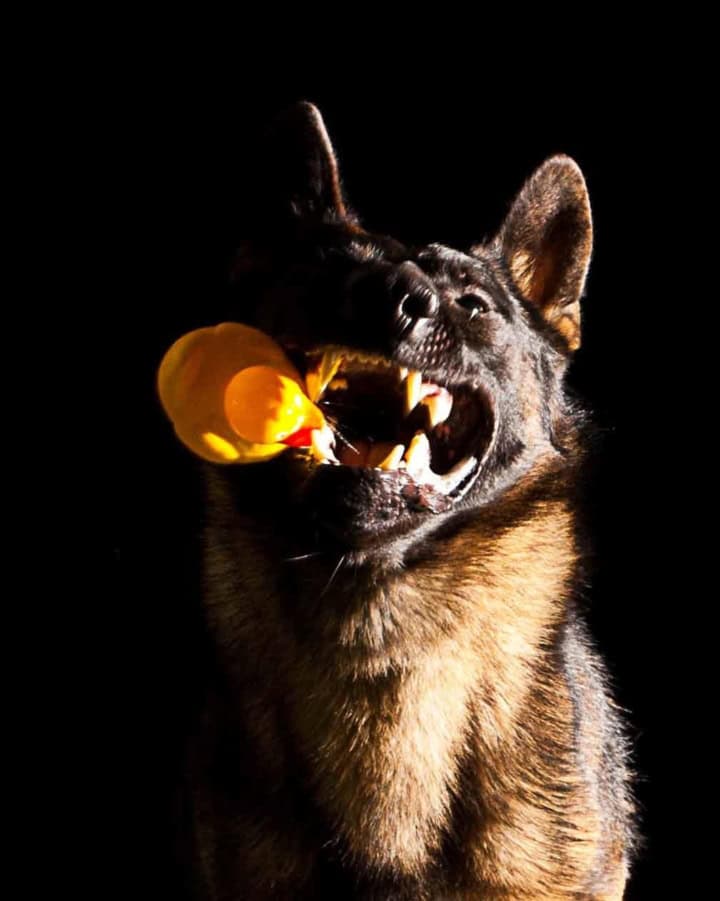While behaviour and training follow scientific rules all learned in the laboratory, we with our own dogs have dynamic relationships, households, and other complexities going on. Limiting training simply to Skinner’s four quadrants of reinforcement and punishment does not allow for the complex thinking and emotions that our dogs have. It doesn’t consider that the one dog that came to class and is panicking might only be panicking because of the car ride to class, or another uncooperative dog cannot learn because he is cold.
Positive Reinforcement, for most dog trainers, relies on the use of food as a reward. There are many other rewards than just food, however, food seems to be the most frequently and commonly used. Again, if the dog is over stimulated and has adrenaline coursing through his system, he will be unable to eat, making the food reward useless. Or some dogs simply aren’t hungry, also meaning that another way needs to be used to train them. So while most dogs are trained successfully with positive reinforcement, we must remember that it does not allow for the emotions and inner goings on of a dog.
Every behaviour learned by a dog should be taught with rewards, or positive reinforcement if you like. When a dog does something that we like, he instantly should get something that he likes so that he will want to do this action for us again. Timing is of the essence here. There needs to be an instant verbal marker, such as “yes” pinpointing the precise moment in time that the dog did as you wished, and then followed with their reward, which is most often, but not limited to, a cookie.
Once a behaviour is taught, the food needs to be weaned away and this is the piece of training where most people get stuck. You can’t keep feeding ‘sit’ for the rest of your dog’s life. You need to teach him ‘sit’, reward him for sit, and then once he fully understands, only randomly reward that, and eventually only rarely reward it. We are talking a matter of a week or two for this progression to start.
A dog that will only sit when a cookie is present does not know ‘sit’. He knows to place his bum on the ground when the cookie is present. The next steps in training would be cookie in your pocket, then cookie in your fridge and you and your dog both run there together, and eventually, only one in two, three or five sits will be rewarded.
While you are rewarding less of this now taught behaviour, you are going to continue teaching your dog this same behaviour in other scenarios or in higher levels of drive, and feeding each occurrence until he knows it. You might start asking him to sit as he is running to grab a cookie off the floor. Or to ‘sit’ at the gas station with boring distractions. This is a much harder behaviour for him, and all of the ‘right’ answers will be appropriately rewarded.
All behaviours needs to be taught in low, medium and high-drive. A sit in your kitchen with nothing going on (low drive behaviour), is not the same as a sit when your dog is chasing a cookie, (medium drive behaviour) or a ‘sit when your dog is galloping after a rabbit (high – drive behaviour). A low drive behaviour will not generalize into a medium drive behaviour. You need to teach your dog each and every level, for him to understand that the requirements are still the same.
All of these behaviours need to be taught with rewards, but frequently by the time you get to high-drive behaviours, some consequences will also need to be added.
Sometimes chasing the rabbit is much more fun than any cookie that you can offer, and your dog needs to learn that ‘sit’ means ‘sit’ even if he wants to chase a rabbit. By the time you get to this stage in your training, you should seek a dog trainer used to working with your type of dog. Make sure they have a happy working dog that stares at them adoringly, and see that they have the level of control that you need. If they do, then they can help you apply the appropriate consequences for your dog when they choose not to listen. While consequences are necessary in a dog’s life, they should not be done by inexperienced people. Unfair corrections can ruin a good dog, and can also cause aggression.
Positive Reinforcement is not without its shortcomings. It does not allow for the complexities of individuals, nor does it tap into work ethic as we teach the dogs that there is always something in it for them, which in certain breeds and individuals is not beneficial. We need to make sure that we never become a pez dispenser spitting cookies for behaviours. Positive reinforcement also does not address relationships.
I can teach my chickens to stand on one leg. They come when called. And they eat from my hand. All of these have been taught with positive reinforcement. However, come spring time, my rooster will attack me. With hormones and the season of breeding, he forgets all of his tricks and what he can get from me, and instead wants to protect his flock of ladies. With my rooster this is fine, as I don’t have to live with him. When he is in this mood, I avoid him, or deal with him depending upon my mood!
However, I don’t have this luxury with my dogs. I live with them 24 -7, and they need to be polite with me no matter their mood. I have worked with many disrespectful dogs who can sit fabulously, and have some very nice trained behaviours, but will still then nail their owners for wiping their feet. This is where we get lost with learning theories.
I believe that we need to establish Boundaries and Expectations right when they are young, at seven or eight weeks. One of the first I do with my puppies, in addition to showing them the world, playing with them, and teaching them through positive reinforcement, is a down restraint and toe-nails. I cut all twenty nails, and it will probably take me about forty minutes to an hour. I won’t let my puppy up until he is relaxed and has accepted toe-nails being cut.
Teaching this right at a young age sets your dog up to be a superstar at the vets, and for any future restraints that he might need. He will be a saint on an x-ray table, when getting blood drawn, invasive examinations when he is in pain and so on. Your dog must learn right from a young age that you can handle him, even if it is slightly unpleasant, but that that you are always fair, kind, and have his best interests at heart.
I teach my puppy right from the start that unpleasant things may happen to him, but he will always be safe with me and that I will never hurt him. Some babies at this young age will try and bite you when you cut their toe-nails and this is the absolute perfect age to teach them that you are their fair and noble leader. It is never okay to put teeth on human skin in an attempt to bite, and I believe we do a disservice to dogs when we do not address this fact. Once I have cut my puppies toe nails, and he understands that I can handle him in ways that he does not feel are pleasant, we can then spend the rest of our lives having fun together.
A dog who does not respect you does not care what you think. Therefore he will not listen to your suggestions as you are trying to teach him with positive reinforcement. These dogs become selfish little twerps, smelling your pockets in advance to see if they need to listen!
Boundaries and Expectations must be established right from the start, in a fair manner and by teaching your dog that you will never, ever hurt him. This will give you a keen student staring at you adoringly, willing to take in all the future fun lessons that you have to offer him. Positive Reinforcement is a wonderful thing, providing you remember to have a respectful student that you are teaching!
Wishing you all the best in your training,
Monique Anstee and The Naughty Dogge,


